Themed collection Quantum Dots: Celebrating the 2023 Nobel Prize in Chemistry

Colloidal quantum dot ligand engineering for high performance solar cells
Colloidal quantum dots (CQDs) are fast-improving materials for next-generation solution-processed optoelectronic devices such as solar cells, photocatalysis, light emitting diodes, and photodetectors.
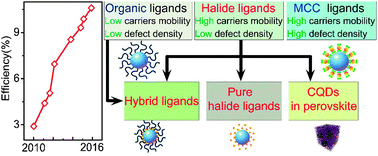
Energy Environ. Sci., 2016,9, 1130-1143
https://doi.org/10.1039/C5EE03887A
An overview on enhancing the stability of lead halide perovskite quantum dots and their applications in phosphor-converted LEDs
The limited stability of lead halide perovskite quantum dots impedes their broad applications and has received tremendous attention. The instability driven by structure, interface, etc. is summarized. Simultaneously, strategies such as compositional engineering and surface engineering towards enabling stable perovskite emitters are reviewed.
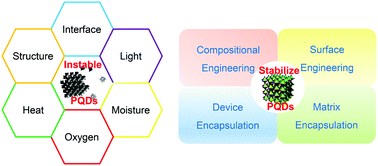
Chem. Soc. Rev., 2019,48, 310-350
https://doi.org/10.1039/C8CS00740C
Carbon quantum dots and their applications
This review covers the progress in the research and development of carbon quantum dots and their applications in chemical sensing, biosensing, bioimaging, nanomedicine, photocatalysis and electrocatalysis.
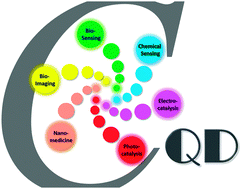
Chem. Soc. Rev., 2015,44, 362-381
https://doi.org/10.1039/C4CS00269E
CdSe nanocrystal based chem-/bio- sensors
Nanocrystals not only are good imaging agents but they can also be sensors of their biological and chemical environment.

Chem. Soc. Rev., 2007,36, 579-591
https://doi.org/10.1039/B517613C
Designing multifunctional quantum dots for bioimaging, detection, and drug delivery
This review outlines the major design principles and criteria governing the engineering of quantum dot-based diagnostic tools and nanotherapeutic agents.

Chem. Soc. Rev., 2010,39, 4326-4354
https://doi.org/10.1039/B915139G
Phosphinecarboxamide based InZnP QDs – an air tolerant route to luminescent III–V semiconductors
In this paper, we report the use of phosphinecarboxamide as a convenient, air and moisture tolerant group-V precursor for the simple synthesis of InP-based quantum dots.
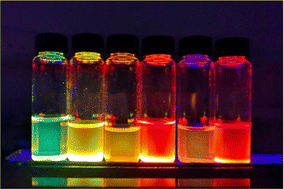
Nanoscale Horiz., 2023,8, 1411-1416
https://doi.org/10.1039/D3NH00162H
Superlattice deformation in quantum dot films on flexible substrates via uniaxial strain
Superlattice deformation in PbS quantum dot thin films introduced by uniaxial strain: In situ GISAXS study on the correlation of morphology and photoluminescence.
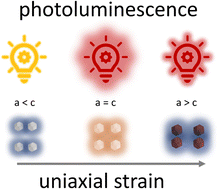
Nanoscale Horiz., 2023,8, 383-395
https://doi.org/10.1039/D2NH00548D
Lead-free, stable, high-efficiency (52%) blue luminescent FA3Bi2Br9 perovskite quantum dots
Lead-free Bi-based perovskite FA3Bi2X9 (X = Cl, Br, and I) quantum dots (QDs) are synthesized for the first time at room temperature. The ligand-passivated FA3Bi2Br9 QDs exhibit blue emission at 437 nm with photoluminescence quantum yield (PLQY) up to 52%.
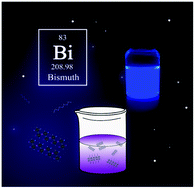
Nanoscale Horiz., 2020,5, 580-585
https://doi.org/10.1039/C9NH00685K
All-solution processed inverted green quantum dot light-emitting diodes with concurrent high efficiency and long lifetime
An all-solution processed inverted green quantum dot-based light-emitting diode with concurrent high efficiency and long lifetime is obtained by precisely controlled double shell growth of quantum dots.
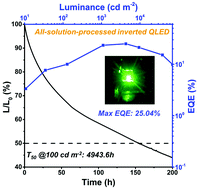
Mater. Horiz., 2019,6, 2009-2015
https://doi.org/10.1039/C9MH01053J
Au quantum dots engineered room temperature crystallization and magnetic anisotropy in CoFe2O4 thin films
For the first time, this work presents a novel room temperature time-effective concept to manipulate the crystallization kinetics and magnetic responses of thin films grown on amorphous substrates.
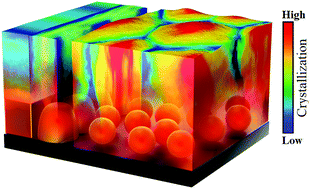
Nanoscale Horiz., 2019,4, 434-444
https://doi.org/10.1039/C8NH00278A
Perovskite quantum dots encapsulated in electrospun fiber membranes as multifunctional supersensitive sensors for biomolecules, metal ions and pH
Electrospun PMMA fiber membrane encapsulated with CsPbBr3 exhibits excellent FRET detection performance on trypsin, Cu2+ and pH.
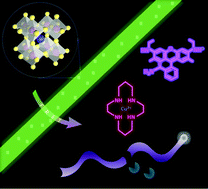
Nanoscale Horiz., 2017,2, 225-232
https://doi.org/10.1039/C7NH00057J
On the crystal structure of colloidally prepared CsPbBr3 quantum dots
Colloidally synthesized quantum dots of CsPbBr3 are orthorhombic in crystal structure not cubic.
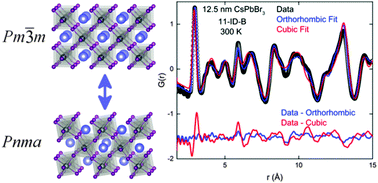
Chem. Commun., 2016,52, 5246-5249
https://doi.org/10.1039/C6CC01088A
One-step hydrothermal synthesis of monolayer MoS2 quantum dots for highly efficient electrocatalytic hydrogen evolution
Monolayer MoS2 QDs were prepared via a facile hydrothermal process and exhibited excellent catalytic activity for the hydrogen evolution reaction.
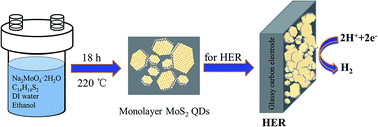
J. Mater. Chem. A, 2015,3, 10693-10697
https://doi.org/10.1039/C5TA02198G
Detection of high-energy compounds using photoluminescent silicon nanocrystal paper based sensors
A silicon nanocrystal paper based sensor has been developed for the rapid, on-site detection of nitro-group containing explosive compounds.

Nanoscale, 2014,6, 2608-2612
https://doi.org/10.1039/C3NR06271F
Fe2O3/carbon quantum dots complex photocatalysts and their enhanced photocatalytic activity under visible light
Fe2O3/CQDs with high photocatalytic activity under visible light was synthesized by a hydrothermal method.

Dalton Trans., 2011,40, 10822-10825
https://doi.org/10.1039/C1DT11147G
6.5% efficient perovskite quantum-dot-sensitized solar cell
Highly efficient perovskite quantum-dot-sensitized solar cell.
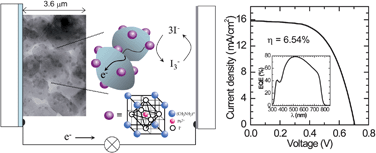
Nanoscale, 2011,3, 4088-4093
https://doi.org/10.1039/C1NR10867K
Strongly green-photoluminescent graphene quantum dots for bioimaging applications
Strongly green fluorescent graphene quantum dots (GQDs) have been prepared, and they are successfully applied to image living cells.
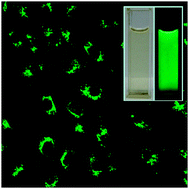
Chem. Commun., 2011,47, 6858-6860
https://doi.org/10.1039/C1CC11122A
Facile preparation and upconversion luminescence of graphene quantum dots
We demonstrate that the upconverted PL properties of GQDs are similar to the ASPL, and the δE between the π and σ orbitals is near 1.1 eV.
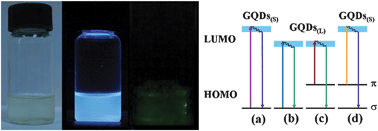
Chem. Commun., 2011,47, 2580-2582
https://doi.org/10.1039/C0CC04812G
Electrocatalytic sulfur electrodes for CdS/CdSe quantum dot -sensitized solar cells
Current density–voltage curves of CdS/CdSe quantum dot-sensitized solar cells featuring Pt, NiS, CuS and CoS counter electrodes. Under AM 1.5 irradiation, the CdS/CdSe QDSSC featuring a CoS electrode and a polysulfide electrolyte provided an energy conversion efficiency as high as 3.4%.
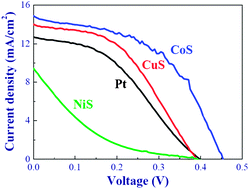
Chem. Commun., 2010,46, 5485-5487
https://doi.org/10.1039/C0CC00642D
Chiral highly luminescent CdS quantum dots
Strongly white emitting chiral D- and L- penicillamine capped CdS QDs have been prepared. Using CD spectroscopy we have shown that they are optically active with almost identical mirror images of one another in the range of 200–390 nm CD scans.
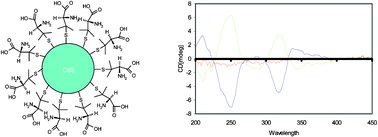
Chem. Commun., 2007, 3900-3902
https://doi.org/10.1039/B704636G
Photoactivated luminescent CdSe quantum dots as sensitive cyanide probes in aqueous solutions
The first application of quantum dots as highly sensitive and selective luminescent probes for anions determination in aqueous solutions is described. The synthesized nanoparticles proved to be one of the most sensitive detection systems available for monitoring the highly toxic cyanide anion.

Chem. Commun., 2005, 883-885
https://doi.org/10.1039/B414858D
Electronic and vibrational properties of a MOF-5 metal–organic framework: ZnO quantum dot behaviour
Photons at hν = 28 600 cm−1 are captured by the organic part of a MOF-5 metal–organic framework and efficiently transferred to the inorganic part, behaving as a ZnO quantum dot, emitting at hν′ = 19 050 cm−1.
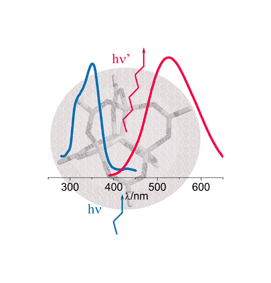
Chem. Commun., 2004, 2300-2301
https://doi.org/10.1039/B407246D
Peptide-coated CdS quantum dots for the optical detection of copper(II) and silver(I)
A pentapeptide with a designed amino acid sequence was utilized to fabricate a QD dot-based sensor. Similarly, new chemo- and biosensors may be developed by taking advantage of multi-functionality system design.
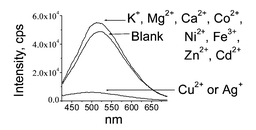
Chem. Commun., 2003, 2684-2685
https://doi.org/10.1039/B308991F
Photosensitization of nanocrystalline TiO2 by self-assembled layers of CdS quantum dots
We report the preparation and characterization of CdS photosensitized TiO2 electrodes.

Chem. Commun., 2002, 1030-1031
https://doi.org/10.1039/B201661C
Blue-emitting InP quantum dots participate in an efficient resonance energy transfer process in water
Highly efficient pure-blue emitters based on environmentally friendly InP/ZnS quantum dots are developed for multicolour bioimaging and resonance energy transfer studies.
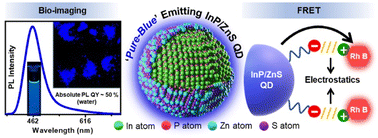
Chem. Sci., 2023,14, 5167-5176
https://doi.org/10.1039/D3SC00164D
ZnSe quantum dots modified with a Ni(cyclam) catalyst for efficient visible-light driven CO2 reduction in water
A robust precious metal-free photocatalyst system comprised of ligand-free ZnSe quantum dots and a phosphonic acid-functionalised Ni(cyclam) catalyst achieves efficient reduction of aqueous CO2 to CO.
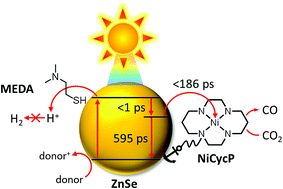
Chem. Sci., 2018,9, 2501-2509
https://doi.org/10.1039/C7SC04429A
A nanocrystal -based ratiometric pH sensor for natural pH ranges
A CdSe/CdZnS nanocrystal modified with a SNARF dye exhibits a ratiometric sensing response in a physiologically relevant pH range (6–9) under linear and two-photon excitation.
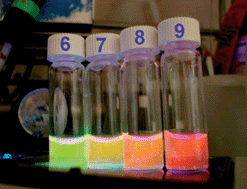
Chem. Sci., 2012,3, 2980-2985
https://doi.org/10.1039/C2SC20212C
Alternating layer addition approach to CdSe/CdS core/shell quantum dots with near-unity quantum yield and high on-time fractions
CdSe/CdS core/shell quantum dots can be formed using alternating layer addition, that display ensemble quantum yield close to unity in solution, a monoexponential PL lifetime, short biexciton lifetimes and high modulation depth blinking, maintaining a high on-time fraction.
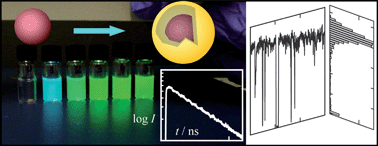
Chem. Sci., 2012,3, 2028-2034
https://doi.org/10.1039/C2SC00561A
Highly efficient CdTe/CdS quantum dot sensitized solar cells fabricated by a one-step linker assisted chemical bath deposition
The power conversion efficiency of CdTe/CdS core/shell quantum dot sensitized solar cells achieves 3.8% and 5.25% under AM 1.5 G one sun (100 mW cm−2) and 0.12 sun illumination, respectively.
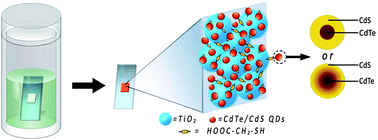
Chem. Sci., 2011,2, 1396-1400
https://doi.org/10.1039/C1SC00144B
Co3O4 quantum dot decorated polypyrrole nanocomposites as a flexible, conducting, anticorrosive and antibacterial agent: sustainable experimental and theoretical approach
Co3O4 QD-based PPy NCs were synthesized by an in situ method. The NCs show 81.58% protection to MS. The antibacterial activity was comparable to that of Hexa disk antibiotics. The NCs were proved to be flexible, conducting, corrosion inhibiting, and antibacterial.
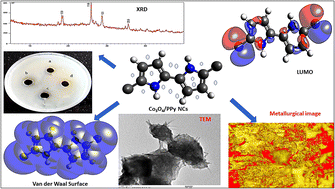
RSC Sustainability, 2023,1, 523-534
https://doi.org/10.1039/D2SU00104G
Non-stoichiometric CuxIn1−xS quantum dots for robust photodegradation of gemifloxacin: influencing parameters, intermediates, and insights into the mechanism
Promising 0D non-stoichiometric CuxIn1−xS quantum dots show robust photodegradation towards gemifloxacin under visible light.
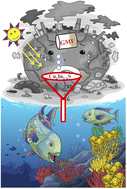
Environ. Sci.: Adv., 2022,1, 769-780
https://doi.org/10.1039/D2VA00143H
CIS QDs nucleated on oxygen vacancy rich BOI microplates: a hybrid photocatalyst with enhanced green energy production via mediator free Z-scheme dynamics
Efficacious H2 and O2 evolution over mediator free direct Z-scheme oriented 0D-2D CIS-BOI heterostructure photocatalyst.
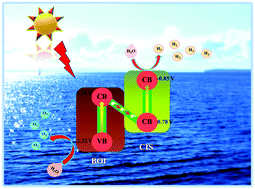
Energy Adv., 2022,1, 422-437
https://doi.org/10.1039/D2YA00046F
Photoconductive focal plane array based on HgTe quantum dots for fast and cost-effective short-wave infrared imaging
Image (left) acquired using a camera which active layer is a photoconductive layer fabricated from a HgTe nanocrystal film (schematic on right).
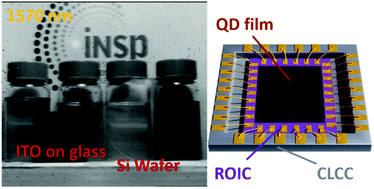
Nanoscale, 2022,14, 9359-9368
https://doi.org/10.1039/D2NR01313D
Color tunable emission from Eu3+ and Tm3+ co-doped CsPbBr3 quantum dot glass nanocomposites
Color coordinates of as cast and heat-treated samples at different times and temperatures.

Phys. Chem. Chem. Phys., 2022,24, 1486-1495
https://doi.org/10.1039/D1CP05016H
2D-MoS2 nanosheets as effective hole transport materials for colloidal PbS quantum dot solar cells
Herein, we demonstrate for the first time matrix-free deposition of two dimensional (2D) MoS2 nanosheets as an efficient hole transport layer (HTL) for colloidal lead sulfide (PbS) quantum dot (QD) solar cells.
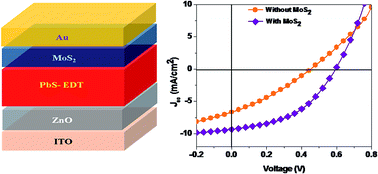
Nanoscale Adv., 2019,1, 1387-1394
https://doi.org/10.1039/C8NA00272J
Enhanced visible-light-driven photocatalysis from WS2 quantum dots coupled to BiOCl nanosheets: synergistic effect and mechanism insight
Novel 0D/2D heterojunctions of WS2 QDs/BiOCl exhibited enhanced visible-light driven photocatalytic activity.
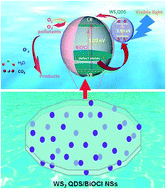
Catal. Sci. Technol., 2018,8, 201-209
https://doi.org/10.1039/C7CY01784G
Performance improvement of perovskite solar cells by employing a CdSe quantum dot/PCBM composite as an electron transport layer
Organic–inorganic hybrid perovskite solar cells with a CdSe quantum dot/PCBM composite as an electron transport layer are reported by materials synthesis, characterization, device fabrication, performance measurements and large-scale first-principles calculations.
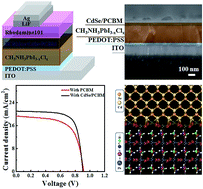
J. Mater. Chem. A, 2017,5, 17499-17505
https://doi.org/10.1039/C7TA00203C
All-inorganic quantum-dot light-emitting diodes based on perovskite emitters with low turn-on voltage and high humidity stability
We present the all-inorganic QLEDs, including inorganic perovskite emitters (CsPbBr3) and inorganic charge transport layers (CTLs), with emphasis on the significantly improved device stability and low turn-on voltage.

J. Mater. Chem. C, 2017,5, 4565-4570
https://doi.org/10.1039/C6TC05578H
Carbon quantum dots as a visible light sensitizer to significantly increase the solar water splitting performance of bismuth vanadate photoanodes
Our photoanode has achieved a record high photocurrent density and applied bias photon-to-current efficiency for BiVO4-based photoanodes.
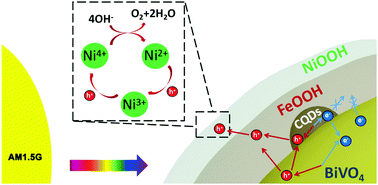
Energy Environ. Sci., 2017,10, 772-779
https://doi.org/10.1039/C6EE03442J
One-pot synthesis of a quantum dot-based molecular imprinting nanosensor for highly selective and sensitive fluorescence detection of 4-nitrophenol in environmental waters
A facile surface imprinting polymerization one-pot synthesis strategy based on the electron-transfer induced fluorescence quenching mechanism for fluorescence detection of 4-nitrophenol.
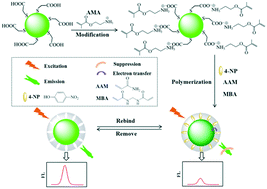
Environ. Sci.: Nano, 2017,4, 493-502
https://doi.org/10.1039/C6EN00395H
High-quality CsPbBr3 perovskite nanocrystals for quantum dot light-emitting diodes
We synthesized luminescent CsPbBr3 nanocrystals with a high quantum yield and realized patterning and color-purity light-emitting diode applications.
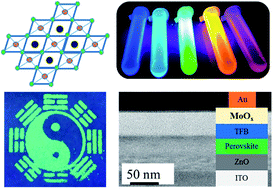
RSC Adv., 2017,7, 10391-10396
https://doi.org/10.1039/C6RA27665B
Synthesis of carbon quantum dots from cabbage with down- and up-conversion photoluminescence properties: excellent imaging agent for biomedical applications
The synthesis of luminescent and biocompatible carbon quantum dots is demonstrated from cabbage, a new carbonaceous biomaterial, for bio-imaging.
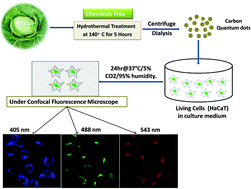
Green Chem., 2015,17, 3791-3797
https://doi.org/10.1039/C5GC00686D
Edge-enriched graphene quantum dots for enhanced photo-luminescence and supercapacitance
Graphene quantum dots synthesized from activated graphene using ultrasonication and chemical activation shows high edge-enriched states resulting in excellent luminescence and capacitance properties.
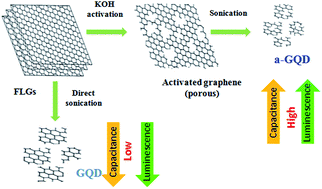
Nanoscale, 2014,6, 11988-11994
https://doi.org/10.1039/C4NR02365J
Highly luminescent S, N co-doped graphene quantum dots with broad visible absorption bands for visible light photocatalysts
A facile hydrothermal synthesis route to N and S, N co-doped graphene quantum dots (GQDs) was developed by using citric acid as the C source and urea or thiourea as N and S sources.
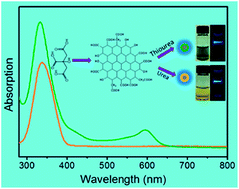
Nanoscale, 2013,5, 12272-12277
https://doi.org/10.1039/C3NR04402E
High-performance quantum dot -sensitized solar cells based on sensitization with CuInS2 quantum dots /CdS heterostructure
A TiO2-sensitization layer consisting of CdS nanocrystals closely packed around the linked CuInS2 quantum dot-pillars yields a high conversion efficiency of 4.2% for the resulting sensitized solar cell.
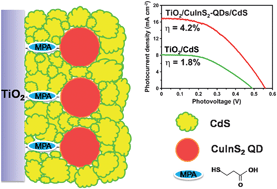
Energy Environ. Sci., 2012,5, 5315-5324
https://doi.org/10.1039/C1EE02253A
One-pot hydrothermal synthesis of graphene quantum dots surface-passivated by polyethylene glycol and their photoelectric conversion under near-infrared light
Compared with the graphene quantum dots (GQDs), GQDs surface-passivated by polyethylene glycol (GQDs-PEG) possessed higher fluorescence performance and upconversion properties. And they exhibited an obvious and stable photocurrent under near-infrared (NIR) light.
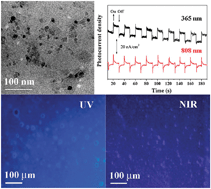
New J. Chem., 2012,36, 97-101
https://doi.org/10.1039/C1NJ20658C
CuInS2/ZnS core/shell quantum dots by cation exchange and their blue-shifted photoluminescence
Highly luminescent CuInS2/ZnS (CIS/ZnS) core/shell quantum dots with a quantum yield of 65% were synthesized by a cation exchange reaction.
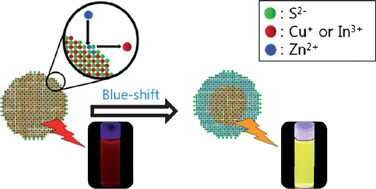
J. Mater. Chem., 2011,21, 3745-3750
https://doi.org/10.1039/C0JM03194A
Preparation and enhanced visible-light photocatalytic H2-production activity of CdS quantum dots -sensitized Zn1−xCdxS solid solution
CdS quantum dot-sensitized Zn1−xCdxS materials show high visible-light photocatalytic H2-production activity in aqueous solutions containing Na2SO3 and Na2S sacrificial reagents.
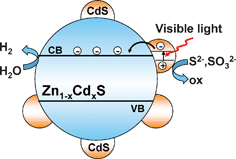
Green Chem., 2010,12, 1611-1614
https://doi.org/10.1039/C0GC00236D
A systematic examination of surface coatings on the optical and chemical properties of semiconductor quantum dots
Hydrophobic Quantum Dots (QDs) were solubilized in water using various ligands and surface coatings, in order to examine the hydrodynamic size, fluorescence quantum yield, photostability, chemical stability, and biocompatibility of water-soluble QDs.
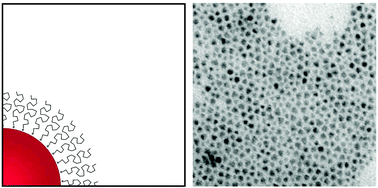
Phys. Chem. Chem. Phys., 2006,8, 3895-3903
https://doi.org/10.1039/B606572B
Simultaneous detection of Escherichia coli O157∶H7 and Salmonella Typhimurium using quantum dots as fluorescence labels
Escherichia coli O157∶H7 and Salmonella Typhimurium in a food sample were simultaneously determined by measuring the intensity of the emission peaks of fluorescent nanoparticles at 525 nm and 705 nm.
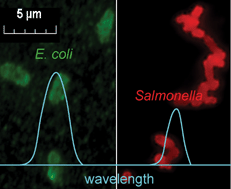
Analyst, 2006,131, 394-401
https://doi.org/10.1039/B510888H
Oxygen vacancies confined in Co3O4 quantum dots for promoting oxygen evolution electrocatalysis
Abundant oxygen vacancies confined in Co3O4 quantum dots provide more efficient Co(II), more active sites and improved conductivity for superior OER performance.
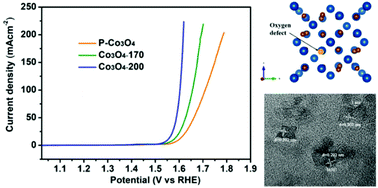
Inorg. Chem. Front., 2019,6, 2055-2060
https://doi.org/10.1039/C9QI00325H
About this collection
This cross-journal collection is dedicated to quantum dots, in honour of the 2023 Nobel Prize in Chemistry. We have selected a wide range of well-received articles and reviews (including several authored by one of the Nobel Prize winners, Moungi Bawendi), published over the last twenty years, to showcase the diverse work produced in the field of quantum dots. This collection mainly focuses on traditional semiconductor-based quantum dots, but some more recent developments in the field, such as carbon quantum dots, have also been included. Research on the synthesis, characterisation/optimisation and various applications of quantum dots has been of great importance to the development of the field of nanotechnology.